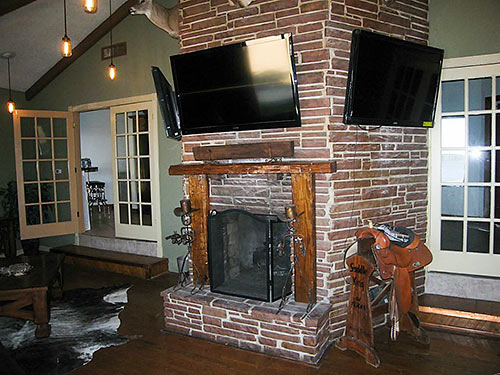
- 18603 Bluffview Dr. [HAR]


WHERE THE POOP IS, IN AND AROUND LAKE HOUSTON 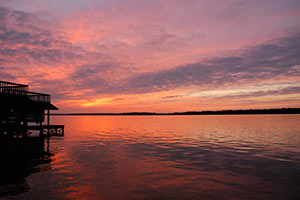 “While some Houston bayous, such as Buffalo and White Oak, have bacteria levels seven times higher than Lake Houston’s watershed, the waters flowing from the San Jacinto River are more vital, said Steve Hupp, Bayou Preservation Association spokesman. . . . Houston’s drinking water is pumped from an area of the lake not contaminated with bacteria.
Only the northwest corner of the lake is impaired, records show. This segment runs from where the river intersects Spring Creek, winds through Humble and past the Kingwood golf course, and ends at the West Lake Houston Parkway bridge.
The bacteria level found in the lake segment exceeds the state standard of 126 E. coli per 100 milliliters of water by 100 percent. Levels on both the river’s west or east forks are lower — exceeding the standard by 25 percent to 56 percent, depending on the segment. Yet a small tributary, Crystal Creek, which feeds into the west fork, has the highest count. It exceeds the state standard by 168 percent.
The communities along the San Jacinto watershed are experiencing a boom in development, especially around the river’s west fork in Montgomery County. Exxon Mobil already has a new 385-acre corporate campus that will be home to 10,000 workers under construction there, while the Boy Scouts recently sold their nearby 2,175-acre camp to a master-planned community developer for a reported $60 million.” [Houston Chronicle ($)] Photo of Lake Houston: Sara Robertson (license)
“While some Houston bayous, such as Buffalo and White Oak, have bacteria levels seven times higher than Lake Houston’s watershed, the waters flowing from the San Jacinto River are more vital, said Steve Hupp, Bayou Preservation Association spokesman. . . . Houston’s drinking water is pumped from an area of the lake not contaminated with bacteria.
Only the northwest corner of the lake is impaired, records show. This segment runs from where the river intersects Spring Creek, winds through Humble and past the Kingwood golf course, and ends at the West Lake Houston Parkway bridge.
The bacteria level found in the lake segment exceeds the state standard of 126 E. coli per 100 milliliters of water by 100 percent. Levels on both the river’s west or east forks are lower — exceeding the standard by 25 percent to 56 percent, depending on the segment. Yet a small tributary, Crystal Creek, which feeds into the west fork, has the highest count. It exceeds the state standard by 168 percent.
The communities along the San Jacinto watershed are experiencing a boom in development, especially around the river’s west fork in Montgomery County. Exxon Mobil already has a new 385-acre corporate campus that will be home to 10,000 workers under construction there, while the Boy Scouts recently sold their nearby 2,175-acre camp to a master-planned community developer for a reported $60 million.” [Houston Chronicle ($)] Photo of Lake Houston: Sara Robertson (license)

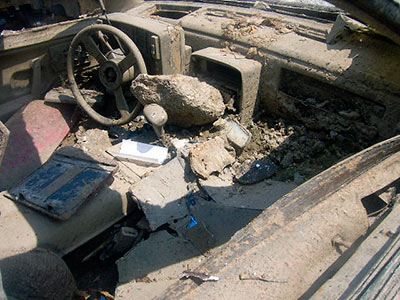
That stolen 1985 Fiero GT that HPD officers pulled from the bottom of Lake Houston last summer after a 22-year soak is now available for sale online, a reader notes. Damaged-car auction site Copart (pronounced “CO-part,” not “COP-art”) features the mangled, muddy mess in an extensive photo gallery, and pegs the car’s actual cash value (before the minor flooding incident, of course) at $2,000 — same as the estimated cost to repair. Minimum bid for the fiberglass-paneled former vehicle: $175. Houston’s Art Car Parade is less than 3 months away.
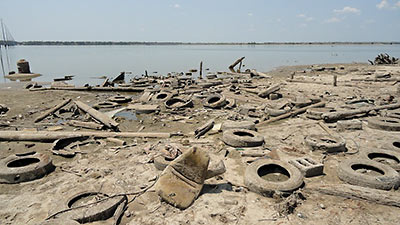
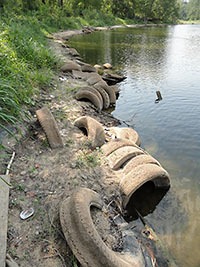 Low water levels have exposed more Lake Houston automotive bounty than just that mid-eighties Pontiac Fiero that was liberated from the city’s water supply over the summer: There’s lots more tires and car batteries to be found, too. Before the weekend’s rains threatened to cover it all up again, area residents pulled various debris and about about 100 tires found wedged in the mud from an old abandoned fish camp and marina at the end of Stillson Rd. on the city reservoir’s east side.
Low water levels have exposed more Lake Houston automotive bounty than just that mid-eighties Pontiac Fiero that was liberated from the city’s water supply over the summer: There’s lots more tires and car batteries to be found, too. Before the weekend’s rains threatened to cover it all up again, area residents pulled various debris and about about 100 tires found wedged in the mud from an old abandoned fish camp and marina at the end of Stillson Rd. on the city reservoir’s east side.
Photos: Roger Randall
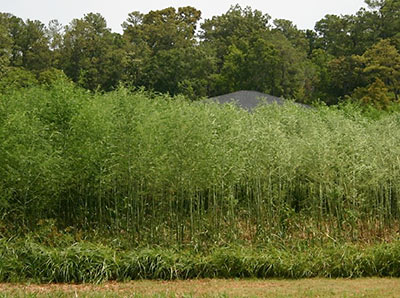
Drought has turned land that used to be part of Lake Houston into a jungle of 14-ft.-tall snake-infested weeds. Waterfront residents of Kings River Village, near the northern end of the lake in Humble, would like to knock down the vegetation that’s sprung up as the lake has receded, and that now surrounds their newly dry backyard docks. But some are proceeding with caution because they don’t own the newfound land and are wary of legal and ecological issues that might result from clear-cutting the newly exposed wetlands. “Right now, we are just in a situation where our kids can’t go back anywhere near the lake because of the weeds and the snakes that are back there,” Clear Sky Dr. resident David Labbe tells the Lake Houston Observer. “We’ve seen an abundance of snakes. We don’t know what rights we have, as homeowners, to go out there and try to remedy the situation.†Labbe has contacted the Army Corps of Engineers, the San Jacinto River Authority, and Houston officials, but hasn’t received an answer yet.
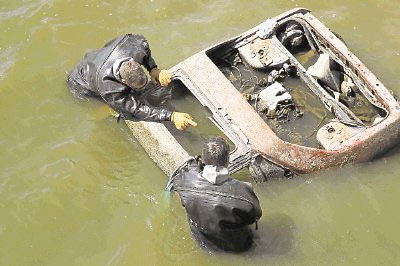
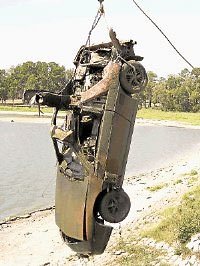 This quarter-century-old Pontiac Fiero was pulled out of Lake Houston yesterday. It’s one of 2 cars recently discovered to have been parked in what used to be the lower depths of the Houston reservoir. One benefit of the drought: Since water levels at the lake have dropped by 6 1/2 to 7 feet, it’s now so much easier to find long-missing vehicles and other debris flavoring the city water supply. The 2-seater was a stolen sportscar believed to have been hanging out in the lake since 1990. Also found sleeping with the fishes near the lake bottom, according to HPD marine unit sergeant T.W. Harding: “tires, logs, all kinds of trash, beer cans beyond belief, a lot of soft drink bottles and beer bottles from the 1950s.â€
This quarter-century-old Pontiac Fiero was pulled out of Lake Houston yesterday. It’s one of 2 cars recently discovered to have been parked in what used to be the lower depths of the Houston reservoir. One benefit of the drought: Since water levels at the lake have dropped by 6 1/2 to 7 feet, it’s now so much easier to find long-missing vehicles and other debris flavoring the city water supply. The 2-seater was a stolen sportscar believed to have been hanging out in the lake since 1990. Also found sleeping with the fishes near the lake bottom, according to HPD marine unit sergeant T.W. Harding: “tires, logs, all kinds of trash, beer cans beyond belief, a lot of soft drink bottles and beer bottles from the 1950s.â€
More pics of the HPD lake patrol unit’s Fiero rescue:
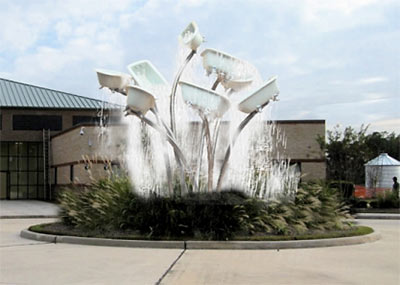
A bouquet of bathtubs by sculptor Donald Lipski will be the centerpiece of a new Houston Water Museum and Education Center in northeast Houston called The WaterWorks. Named “Tubbs” — apparently after Texas country musician and frequent bather Ernest Tubb — Lipski’s sculpture appears to encourage the recycling of water from one bath to the next, although in a playful way perhaps at odds with the standard “short showers only” messages contained in most water-conservation public-information campaigns. The sculpture’s splashing will be controlled, however: That’s a water-recycling system hidden in the bathtub stems.
The museum, scheduled to open in August, will be adjacent to the Northeast Water Purification Plant at the southwest corner of Lake Houston, at 12121 North Sam Houston Parkway East, in Humble.
The bathtub sculpture is a considerable improvement over Lipski’s first proposal for the WaterWorks Museum, the “magic” overflowing water pitcher pictured here: